Introduction
Aquatic environments, including endless bodies of water on our planet, are vital for maintaining life on the soil. These biological systems comprise of different life forms, counting plants, creatures, and microorganisms, alongside the physical and chemical components of their environment. The security of marine environments is of fundamental significance due to their critical commitments to the world’s biodiversity, economy, nourishment security, and climate control.
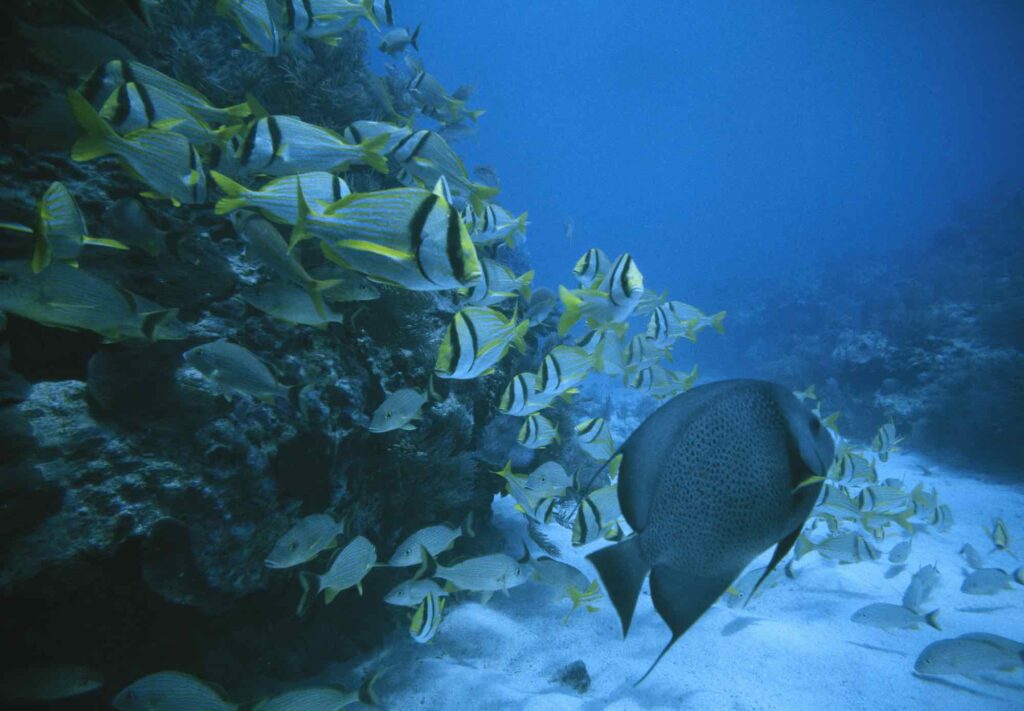
What Constitutes a Marine Ecosystem?
A marine biological system could be a complex web of interconnected components that flourish in different environments inside the sea, such as coral reefs, mangrove timberlands, seagrass beds, and deep-sea trenches. These environments bolster a wide run of species, from minuscule phytoplankton to huge marine warm-blooded creatures. Each life form plays an imperative part in keeping up the general adjust and well-being of the biological system.
Marine environments are imperative for maintaining life on Soil, advertising various commitments that expand past biological esteem. They harbor gigantic biodiversity, lodging over 80% of known species, which has suggestions for logical investigation and biotechnology. Financially, marine environments play a critical part, contributing trillions of dollars yearly through segments such as angling, aquaculture, tourism, and transportation. Moreover, They direct the climate by acting as carbon sinks, retaining climatic CO2 and sequestering carbon in coastal biological systems like mangroves and seagrass beds. Marine biological systems are fundamental for nourishment security, providing food and vocation to billions of individuals through fisheries and aquaculture. Additionally, coastal biological systems, such as coral reefs, mangroves, and seagrass beds, secure against disintegration, storm surges, and flooding. Be that as it may, marine biological systems confront dangers counting overfishing, territory devastation, contamination, climate alteration, and obtrusive species. Preservation endeavours economical angling hones, marine ensured zones, contamination lessening, and climate change moderation, are pivotal to their conservation. By prioritizing the assurance and feasible administration of marine environments, we guarantee their proceeded commitments to worldwide biodiversity, economy, climate direction, nourishment security, and coastal flexibility.
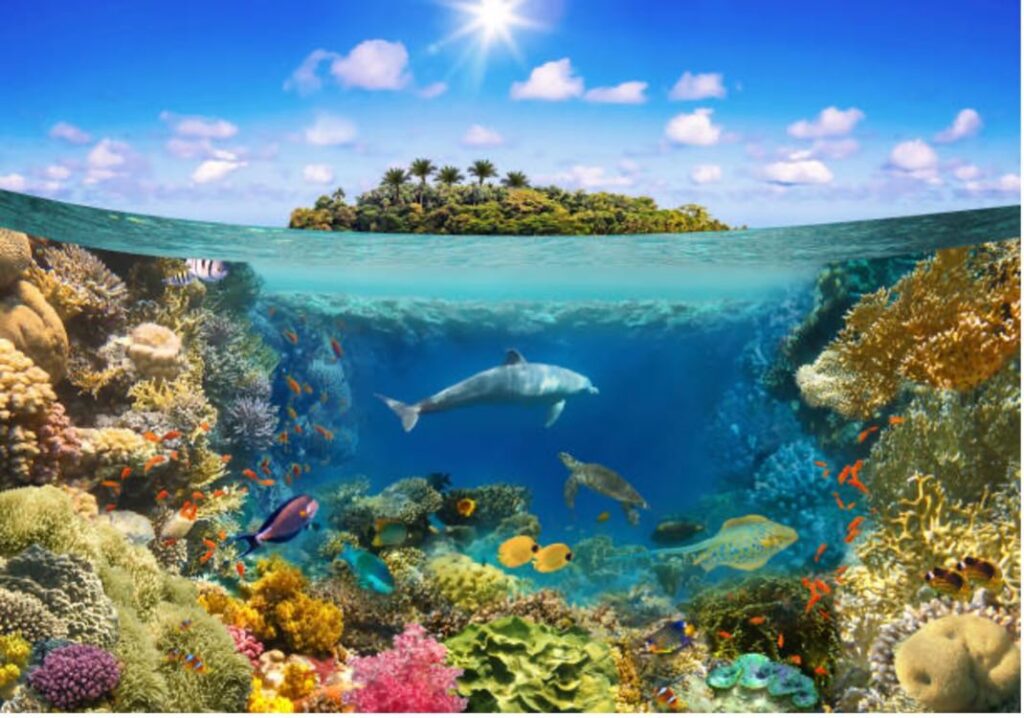
Notable Marine Systems
A few marine biological systems stand out due to their biological noteworthiness and special characteristics. The Awesome Obstruction Reef in Australia is the biggest coral reef framework all-inclusive, supporting a differing cluster of marine life and drawing in visitors from around the world. The Amazon Stream estuary, known as the “Amazon Reef,” is another extraordinary environment that has wealthy marine biodiversity, counting coral reefs and one-of-a-kind species adjusted to the blending of freshwater and seawater. These and numerous other marine biological systems merit our most extreme assurance.
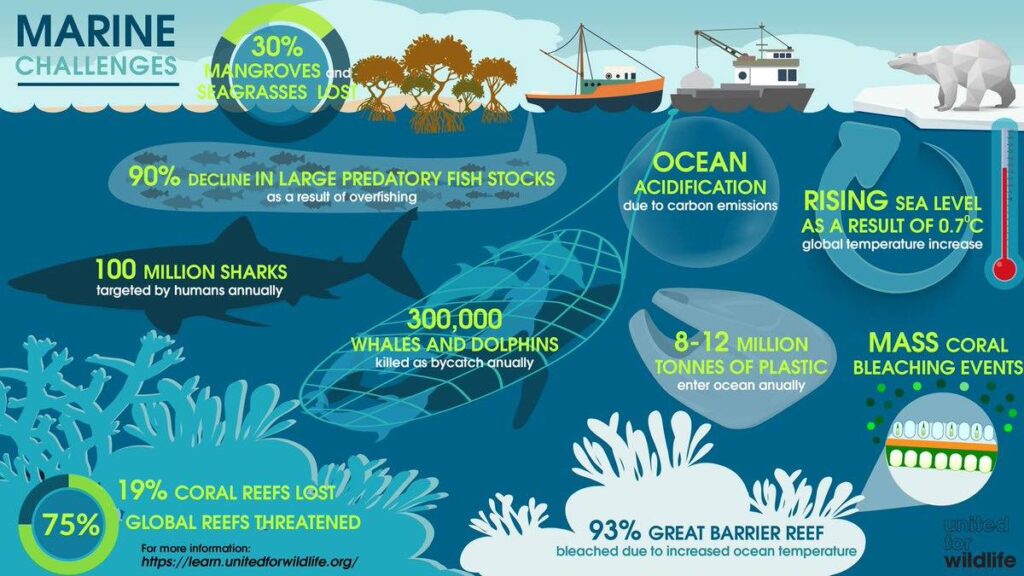
Marine ecosystems encompass a rich tapestry of habitats, each with its distinct characteristics and contributions to the overall health and biodiversity of our planet. Let’s explore some notable marine ecosystems in detail and delve into their significant roles and unique features.
Coral Reefs:
Coral reefs are among the most diverse and biologically productive ecosystems on Earth. They are built by coral polyps that secrete calcium carbonate skeletons, forming intricate structures that provide shelter and habitat for a vast array of marine organisms. Coral reefs support a staggering variety of species, including colourful fish, invertebrates, and microorganisms. They also contribute to coastal protection by acting as natural barriers against waves and storms, reducing erosion and safeguarding shorelines. Additionally, coral reefs are popular tourist destinations, attracting visitors from around the world and generating significant revenue for the local economies.
Mangrove Forests:
Mangroves are coastal ecosystems characterized by dense stands of trees and intricate root systems that thrive in brackish water. They serve as vital nurseries for fish and other marine species, providing protection and abundant food sources for juvenile organisms. Mangrove forests contribute to coastal protection by dissipating the energy of waves and storms, reducing the impacts of erosion and flooding on adjacent land. Moreover, mangroves are efficient carbon sinks, sequestering significant amounts of carbon dioxide from the atmosphere and mitigating climate change. These unique ecosystems play a critical role in supporting coastal biodiversity, improving water quality, and supporting local livelihoods.
Seagrass Meadows:
Seagrass meadows are underwater flowering plants that form extensive meadows in shallow coastal areas. They are highly productive ecosystems, providing habitat, food sources, and nursery areas for a wide range of marine organisms. Seagrass beds help stabilize sediments, improve water quality by trapping pollutants, and contribute to carbon sequestration. They also act as critical habitats for commercially important fish and invertebrate species. Despite their often inconspicuous appearance, seagrass meadows are indispensable components of coastal ecosystems, playing vital roles in coastal protection, biodiversity maintenance, and climate regulation.
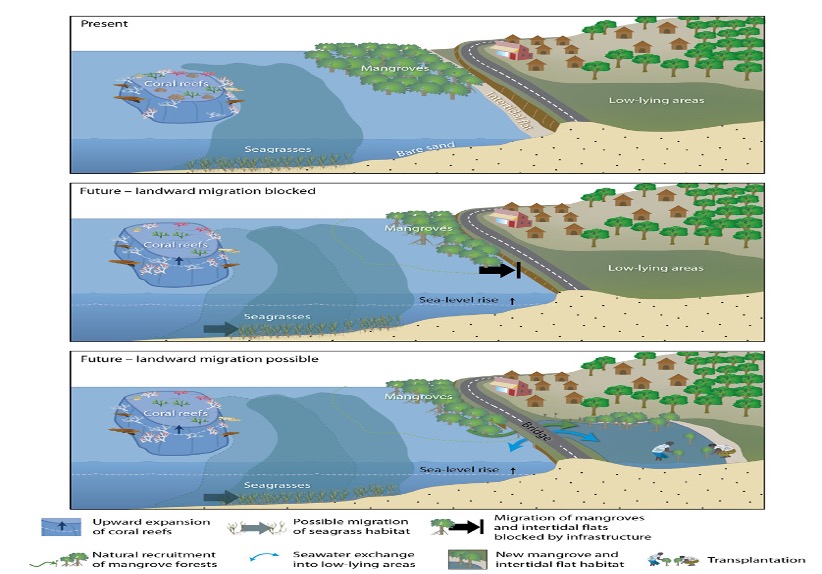
Deep-Sea Ecosystems:
The deep sea, a vast and mysterious realm, is the largest and least-explored ecosystem on Earth. It encompasses a diverse range of habitats, such as hydrothermal vents, cold-water coral reefs, and abyssal plains. Deep-sea ecosystems support unique and specialized species that have adapted to extreme conditions, including darkness, high pressure, and low temperatures. These ecosystems contribute to global biodiversity, provide insights into evolutionary processes, and have the potential for scientific discoveries with applications in biotechnology and medicine. Deep-sea ecosystems play a crucial role in the cycling of nutrients and carbon, impacting global biogeochemical processes.
Open Ocean:
The open ocean, also known as the pelagic zone, covers vast expanses of the world’s oceans. It is characterized by its vastness and its relatively low biological productivity compared to coastal areas. The open ocean supports a diverse range of organisms, including phytoplankton, zooplankton, and larger marine animals. Phytoplankton, the microscopic plant-like organisms, are responsible for nearly half of the Earth’s photosynthesis, playing a crucial role in carbon sequestration and oxygen production. The open ocean also supports important commercial fisheries and serves as a vital transportation route for global trade.
Each of these notable marine ecosystems contributes to the overall health and functioning of our planet. Protecting and conserving these unique habitats is essential for maintaining biodiversity, sustaining fisheries, mitigating climate change, and ensuring the long-term well-being of coastal communities and global ecosystems.
Tragically, marine biological systems are in danger from human exercises. Overfishing, contamination, living space devastation, climate alteration, and obtrusive species are among the essential causes of their corruption. Unsustainable angling hones, such as foot trawling and illicit angling, lead to the consumption of angle stocks and disturb the fragile adjust inside environments. Contamination from land-based sources, counting agrarian runoff, mechanical release, and plastic squandering, hurts marine life and changes living spaces. Coastal development and the devastation of mangroves and seagrass beds reduce the capacity of marine biological systems to absorb carbon dioxide and ensure coastlines from disintegration.
The Effects of Aquatic Life Destruction:
The annihilation of marine biological systems has serious long-term and short-term results. Within the long term, biodiversity misfortune undermines ecosystems’ soundness, diminishing their capacity to adjust to natural changes. The disturbance of nourishment chains and the decay of commercially important angel stocks jeopardize the vocations of millions of individuals who depend on the sea for their food and wage. Moreover, crushing mangroves and coral reefs expels basic buffers against coastal disintegration and storm surges, uncovering coastal communities to expanded powerlessness.
Within the brief term, the pulverization of marine biological systems can lead to critical financial misfortunes. Decreases in angle populaces and the debasement of coral reefs contrarily affect the angling and tourism businesses, which intensely depend on solid marine biological systems for their benefit. Besides, the misfortune of marine biodiversity can disturb fundamental environmental administrations, such as supplement cycling, water filtration, and carbon sequestration, encouraging compounding the impacts of climate alteration.
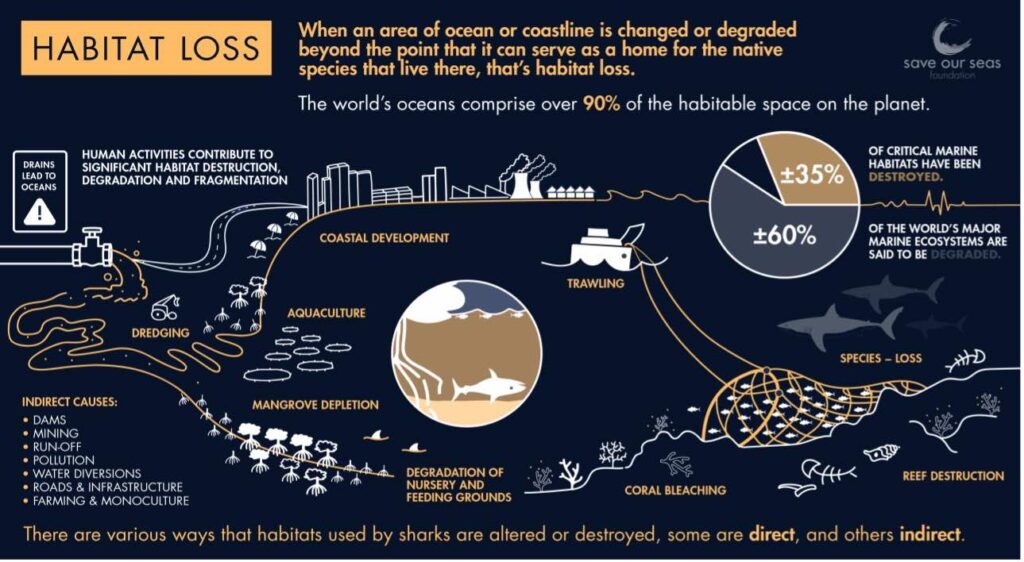
Conclusion
The protection of marine ecosystems is not merely a matter of environmental concern but also a matter of global importance. Preserving these ecosystems ensures the sustainability of our planet’s biodiversity, food security, economy, and climate regulation. Urgent action is required to address the causes of their destruction, including implementing sustainable fishing practices, reducing pollution, and mitigating climate change. By safeguarding marine ecosystems, we secure a prosperous future for both human societies and the remarkable marine life that inhabits our oceans.
Written by – Aahana Dube
Edited by – Vanshika Haldiya
